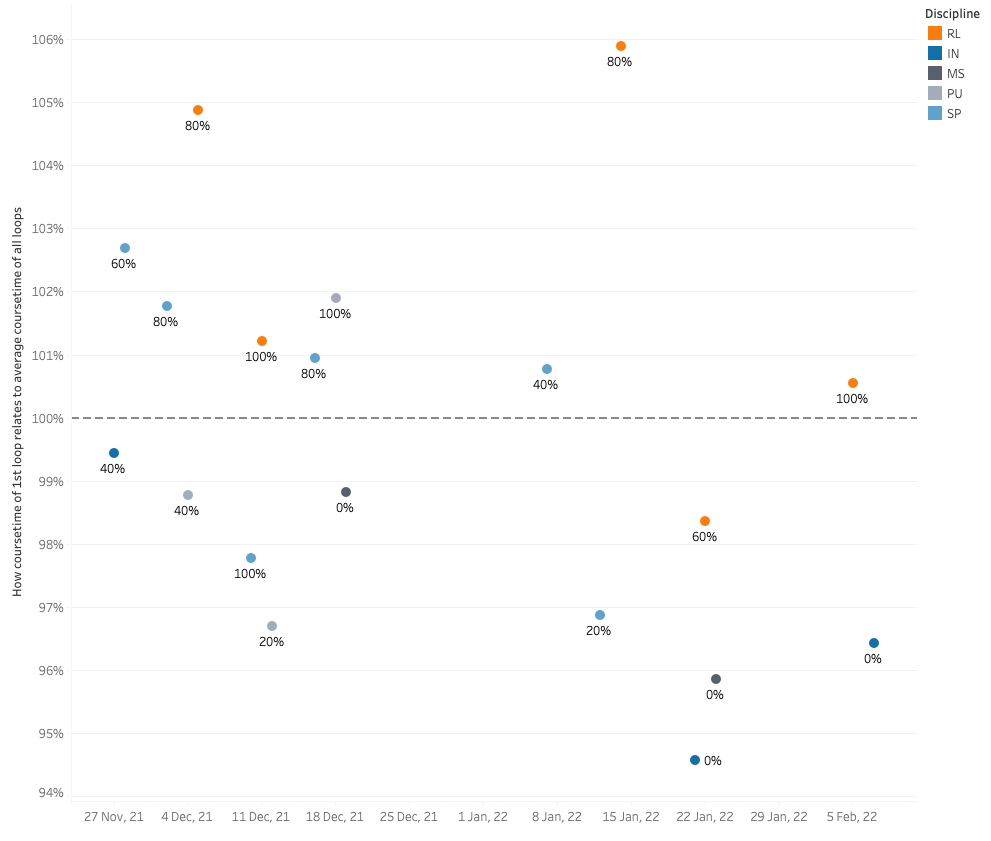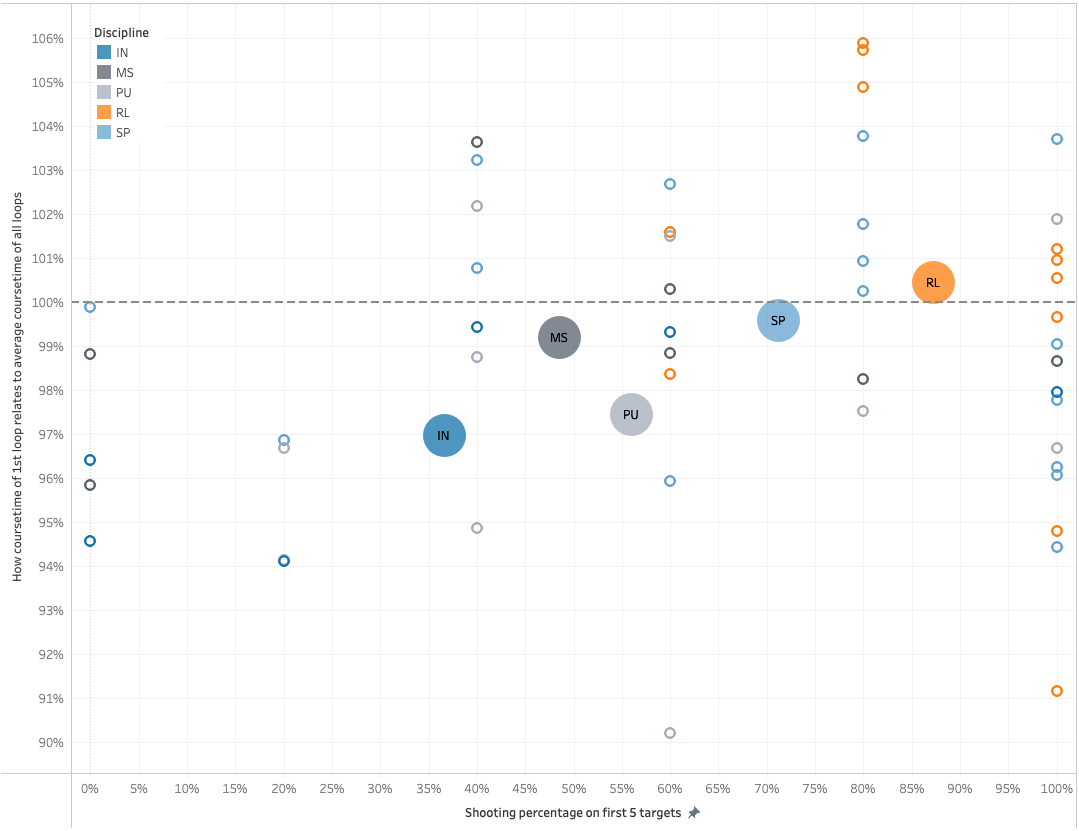Introduction
When watching her today, it is hard to imagine Lisa Vitozzi was fighting for the crystal globe just three seasons ago. She regularly shows flashes of fast skiing and good shooting. But unfortunately, those performances go paired with terribly bad shootings. Especially the first shooting, in prone, has been an incredibly low 41% this season. Yet, when she shows up for the first shooting of a relay race, we see a completely different athlete, shooting 84%.
Of course, shooting in a relay is not the same as shooting in non-team events due to the additional three bullets. But although one could argue relay shooting becomes easier due to this fact, another argument can be made that athletes may take more risk, as they have three bullets to spare.
Having shot four or more misses in her first shootings in the last six non-team events will have a major impact on her mindset. By now I can only imagine it’s the one thing she doesn’t want to think of, but will regardless, especially if she misses the first shot. But I wondered if there was more to it than just the mental aspect. Perhaps a different tactic has had an impact as well? In this article, I research if the data shows that there is more to Vitozzi’s demise in the non-team events than her mental state alone.
Data
I started with data for the 2020-2021 season and the current season to date, including the Individual at the Olympic Games in Beijing. In this timespan, Vitozzi participated in 39 non-team events and 11 relays, for which I analyzed all shots in her first shootings. Well, not exactly all shots, as a shooting percentage for relays typically includes spare bullets that were used as well.
For relays, I only looked at the first five shots and calculated the shooting percentage for those five shots only, knowing that this is not a completely fair comparison due to the above-mentioned difference. Also, 11 relay races is a small sample size, but I chose not to go back further in time as this mostly appears to be an issue of the current season.
Goal
What I was curious about was if her skiing tactics play a role in her shooting problems. To be more precise, does she shoot worse because she is pushing harder in the first lap in non-team events compared to the relays? After all, it is pretty common to see the first lap of a relay go at a pace that reminds us more of a warmup lap.
Since weather conditions, course profiles, types of snow and elevation all have a significant impact on skiing, I couldn’t just compare lap times. So I did the following: I looked at Vitozzi’s lap times in a race (based on course time) and compared the first lap to the average of all her laps in that race. This gave me an indication of her first lap being faster or slower than her average time on the course.
Visualization
The following chart shows all of Vitozzi’s races in the current season so far, represented by a coloured dot. They are ordered by date on the horizontal axis, with the older races on the left and the most recent on the right. The vertical axis shows how the course time of the first loop relates to the average course time of all loops. Below 100% is a faster loop, above 100% a slower one. The labels show her shooting percentage for the first shooting of that race.

A couple of things stand out: in four out of five relays this season she started slower than her average, she shot 80% or better in her first shooting. For the one relay she skied a faster first lap she shot 60%. With a few exceptions, in the races where she starts slower, she hits four out of five. Where she starts faster, she misses between three and five shots.
Now if we look at all the races from the dataset, combined with the averages for discipline, the story the data tells is not much different.

The relays, in which on average she starts her first lap slower than her average lap time, she shoots between 85 and 90%. But in all the other disciplines she starts faster (on average) than her average lap time and shoots worse.
Conclusion
It is clear that Vitozzi’s issue is going to take a lot of mental healing before we see any improvement for her on the range. And we need to be careful not to draw too firm a conclusion while using averages on small sample sizes. But considering that Vitozzi is probably looking for anything to help her right now, slowing down on her first lap may be another factor that can contribute to her getting back to the level we all know she is capable of. Rallenta Lisa!
